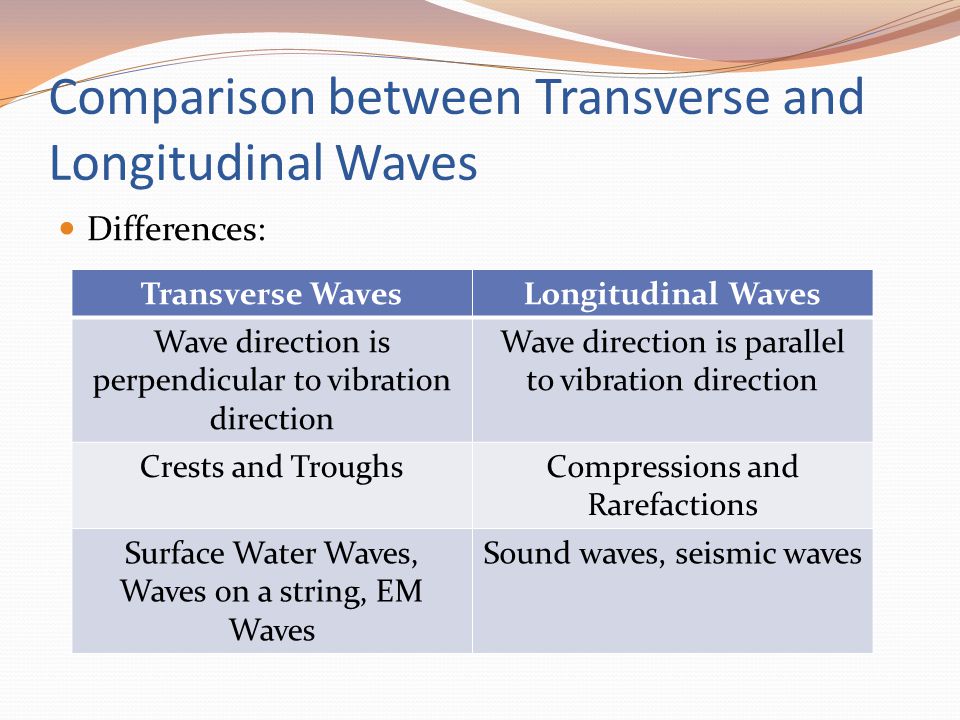What Is Common Between Transverse Waves And Longitudinal Waves
Camila Farah

In our line of people this.
For transverse waves the waves move in perpendicular direction to the source of vibration. Transverse waves medium displacement perpendicular to wave motion longitudinal waves medium displacement parallel to wave motion. The difference between the amplitude of a transverse and longitudinal wave is that transverse waves move up and down or side to side perpendicular to the direction of motion and longitudinal waves squeeze and stretch called compression and rarefaction in the direction of motion. Transverse waves and longitudinal waves are types of mechanical waves.
For longitudinal waves the waves move in parallel direction to the source of vibration. Therefore the common characteristic between transverse wave and longitudinal is both move faster at higher temperature. Longitudinal wave is a wave in which the vibration of the particles travels in the parallel direction to the propagation of wave. A longitudinal wave is a wave where the movement of the medium is in the same direction as the wave.
In a longitudinal wave the displacement of the particles happens parallel to the direction the wave travels. Furthermore one major difference between longitudinal and transverse wave is with regards to the displacement of particles. Sound waves in air waves formed a long a compressed spring seismic waves. So amplitude in a transverse wave is usually given in units of.
RELATED ARTICLE :
- what channel does if loving you is wrong come on
- what causes a toenail to separate from the nail bed
- what causes blood vessels in the eye to burst
In a transverse wave will the medium or the channel moves perpendicular to the direction of the wave. The particles in a solid through which a rayleigh surface wave passes move in elliptical paths with the major axis of the ellipse perpendicular to the surface of the solid. They are similar in the sense that energy is transferred in the form of waves. Difference between longitudinal and transverse wave.
A compression is where the density of the wave medium is highest. While transverse waves have crests and troughs longitudinal waves have compressions and rarefactions. Strutt 3rd baron rayleigh who first studied them in 1885. Here the particles move up and down as the waves move horizontally.
Here the movement of the particles is from left to right and force other particles to vibrate.
Source : pinterest.com


















